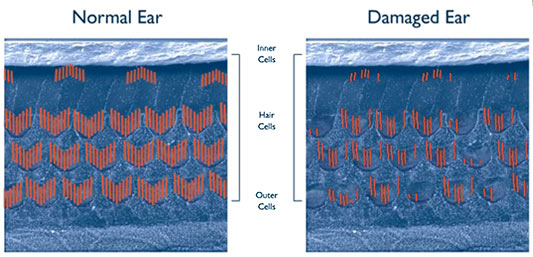HOW YOU HEAR
Our hearing system is divided into four key areas: the outer ear, the middle ear, the inner ear and the central auditory pathways. All four components work together to allow us to hear as we do. The sound first enters the ear at the pinna where it is funneled down the ear canal. The ear canal has hairs and glands that produce wax called cerumen. Cerumen keeps the ear canal moist and lubricated. Sound travels through the ear canal where it meets the tympanic membrane or eardrum.
The vibrations at the eardrum set the bones of the middle ear into motion. The three bones are called the ossicles which include the malleus, incus and stapes. These three bones are the smallest bones in the human body. The third bone, the stapes, transmits the vibrations of the middle ear to the inner ear through the stapes footplate.
The inner ear can be divided into two components. One component is for hearing and the other component is for balance. The hearing portion consists of the cochlea and the nerve for hearing. The cochlea is a snail-shaped bony structure that is responsible for receiving the sound signal by tiny hair cells. These hair cells transmit the sound to the auditory nerve which will carry sound to the brain.

The fourth component is the central auditory pathway. This system is a complex network of neural pathways in the brain that is responsible for sound localization, speech understanding in noisy listening situations, and other complex sounds, such as music perception.
Damage or impairment to any one of these components that make up our hearing system can contribute to hearing impairment. Hearing loss can mislead our brain with a loss of audibility and distortion in the message that is trying to reach the brain. The ears and the brain work together in a sophisticated manner to process sound and allow us to hear as we do.


